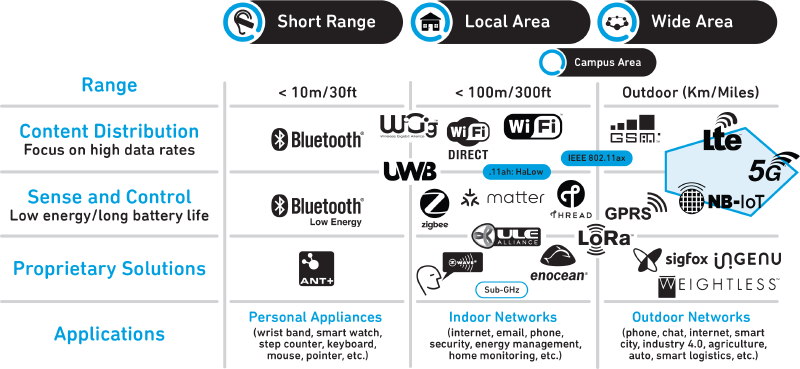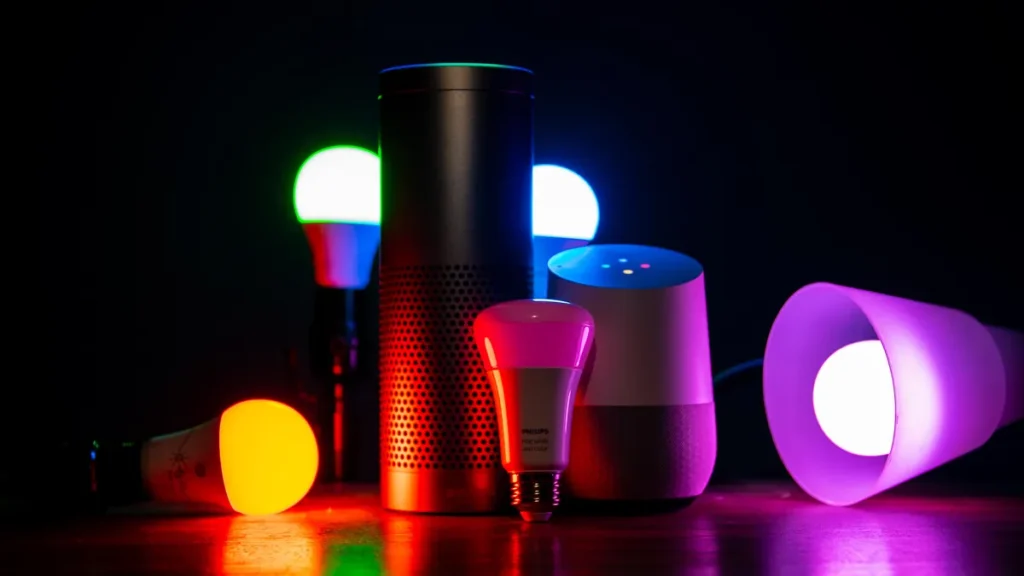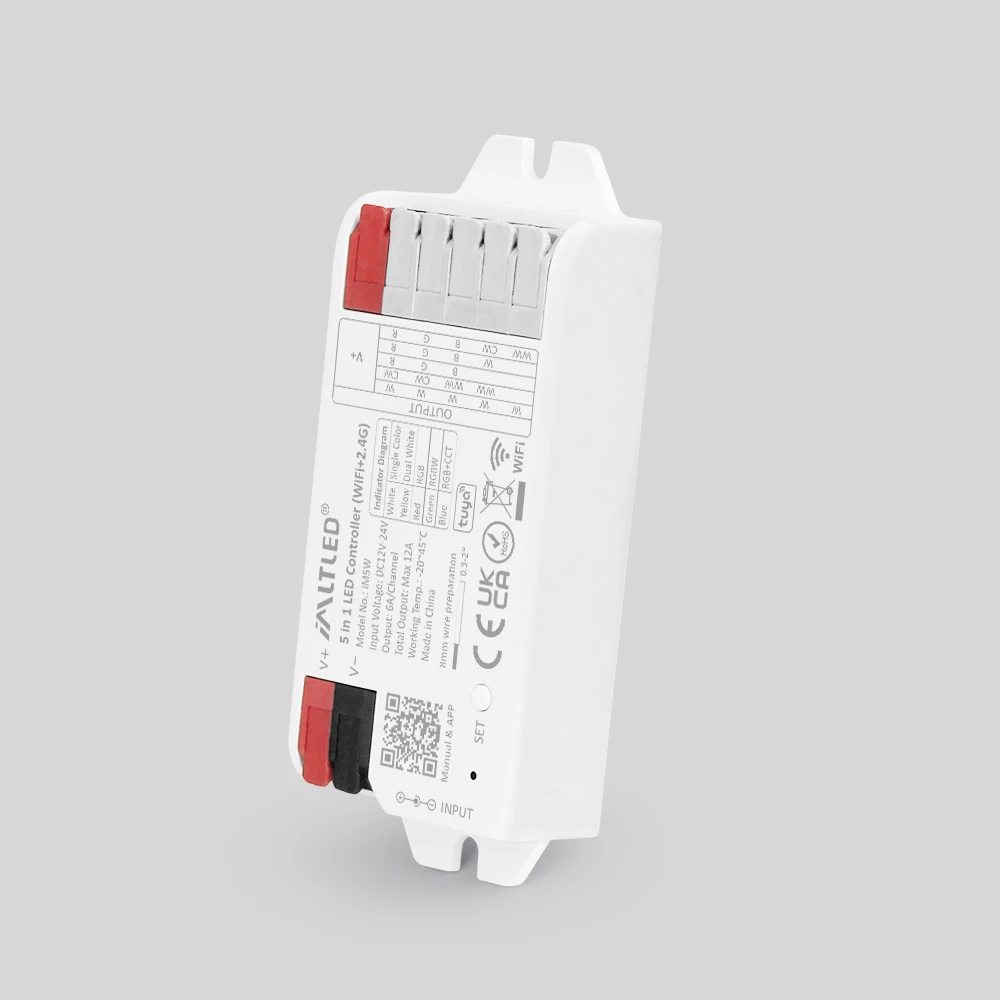In the multifaceted world of wireless communication technologies, a variety of protocols serve unique purposes, catering to different requirements across devices and applications. Among these, Zigbee, Wi-Fi, Bluetooth, and the recently introduced Matter protocol stand out, each embodying distinct characteristics and functionalities. This blog post aims to elucidate the differences among these protocols, exploring their strengths, limitations, and ideal use cases. auoky.com
Zigbee: The Low-Power, Low-Data-Rate Champion
Overview
Zigbee is a low-power, low-data-rate wireless communication protocol designed primarily for automation and control applications. It operates on the IEEE 802.15.4 standard and is ideally suited for scenarios that require long battery life and low energy consumption, such as in home automation systems, smart lighting, and sensor networks.
Characteristics
- Range and Topology: Zigbee typically supports low data rates (up to 250 kbps) and is optimized for short-range communications, generally within 10-100 meters. Its mesh networking capability allows devices to communicate with one another, extending the effective range by relaying signals through several nodes.
- Energy Efficiency: One of Zigbee’s most noteworthy features is its energy efficiency, allowing devices to last for years on small batteries. This makes it an attractive option for resource-constrained devices that need to operate continuously.
- Interoperability: While Zigbee is widely used, interoperability can sometimes be a challenge due to the existence of various profiles. Companies such as Zigbee Alliance are working to unify these standards to enhance compatibility among devices.
Use Cases
Zigbee’s design and capabilities make it an ideal choice for:
- Home automation (lights, thermostats, and security sensors).
- Industrial automation (sensor networks and process control).
- Healthcare applications (tracking patients or remotely monitoring health metrics).
Wi-Fi: The Ubiquitous High-Speed Connectivity Solution
Overview
Wi-Fi, based on the IEEE 802.11 standards, is one of the most widely adopted wireless communication protocols globally. It facilitates high-speed internet access and device connectivity, serving both consumer and enterprise markets with its robust data rates and broad range.
Characteristics
- Data Rate and Range: Wi-Fi networks can achieve data transfer rates ranging from several Mbps to multiple Gbps, depending on the standard (e.g., 802.11ac, 802.11ax). Its range typically extends from 30 meters in indoor environments to over 100 meters outdoors.
- High Power Consumption: Unlike Zigbee, Wi-Fi is not optimized for low power consumption, which can pose limitations for battery-operated devices. Continuous operation often requires devices to be plugged into a power source.
- Extensive Ecosystem: Wi-Fi’s widespread acceptance has resulted in a vast ecosystem of devices, from laptops and smartphones to smart home gadgets. This extensive integration facilitates seamless communication and connectivity.
Use Cases
Wi-Fi is ideal for applications including:
- Broadband internet access for homes and businesses.
- Streaming high-definition video and online gaming.
- Interconnectivity of smart devices in a home or office setting.
Bluetooth: The Short-Range, Low-Power Communicator
Overview
Bluetooth is another prominent wireless communication protocol widely recognized for its short-range connectivity, primarily catering to personal area networks (PAN). Established by the Bluetooth Special Interest Group, it operates in the 2.4 GHz frequency band, making it ideal for connecting devices in close proximity.
Characteristics
- Range and Data Rate: Bluetooth typically offers a range of about 10-100 meters depending on the class of the device, with data rates varying from 720 kbps (Bluetooth Classic) to up to 2 Mbps (Bluetooth Low Energy). Bluetooth Low Energy (BLE) is particularly popular for IoT applications due to its low power consumption.
- Intermittent Connectivity: Bluetooth is optimized for intermittent transmissions, making it suitable for devices that do not require a constant connection, such as wearables and health monitoring devices.
- Piconet Architecture: Bluetooth employs a piconet architecture that establishes a master-slave relationship between devices, allowing for communication within defined groups.
Use Cases
The versatility of Bluetooth positions it well for:
- Audio streaming through wireless headphones and speakers.
- Health and fitness devices (smartwatches, heart rate monitors).
- Smart home devices (smart door locks, voice assistants).
Matter: The Future of Interoperability
Overview
Matter, formerly known as Project Connected Home over IP (Project CHIP), is a new, open-source connectivity standard aimed at simplifying device interoperability across various ecosystems. Backed by major entities including Apple, Google, Amazon, and the Connectivity Standards Alliance, Matter aims to unify the fragmented smart home environment.
Characteristics
- Layered Architecture: Matter operates on a layered architecture that provides a common application programming interface (API) for different devices, streamlining communication and enhancing interoperability.
- Support for Multiple Protocols: Matter is designed to work over existing networking technologies, including Ethernet, Wi-Fi, and Thread (a low-power mesh networking protocol), providing flexibility in implementation.
- Market Standardization: By promoting a standard protocol, Matter seeks to reduce manufacturer fragmentation, ensuring that consumers can easily add and use devices from different brands in a seamless manner.
Use Cases
Matter’s comprehensive approach suggests its application across a spectrum of use cases, including:
- Smart home environments where devices from various manufacturers need to work together.
- Home security systems integrating products from different vendors.
- Seamless user experiences through voice assistants and smartphone apps.
Conclusion
In sum, the landscape of wireless communication protocols is rich with diversity, each offering unique features tailored to specific use cases. Zigbee shines in low-power applications, Wi-Fi reigns in high-speed connectivity, Bluetooth excels in personal area networking, and Matter is setting the stage for future interoperability across devices. Understanding these distinctions not only empowers consumers and developers to make informed choices but also paves the way for more integrated and efficient technological ecosystems. As the adoption of smart devices continues to rise, recognizing and leveraging the right protocol for the right application becomes increasingly critical in building a cohesive and functional connected world.


